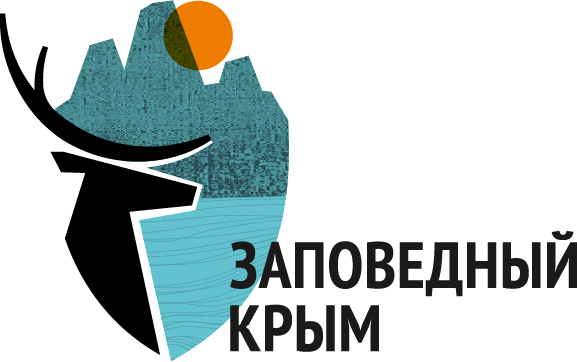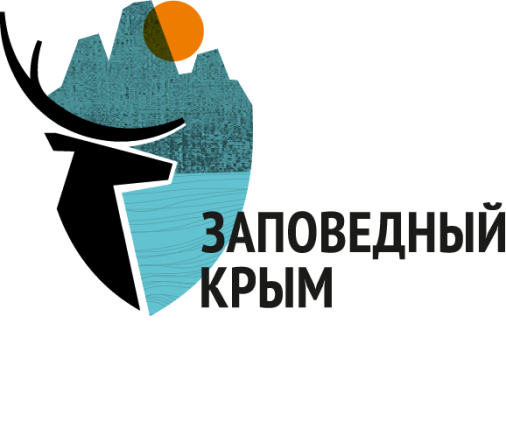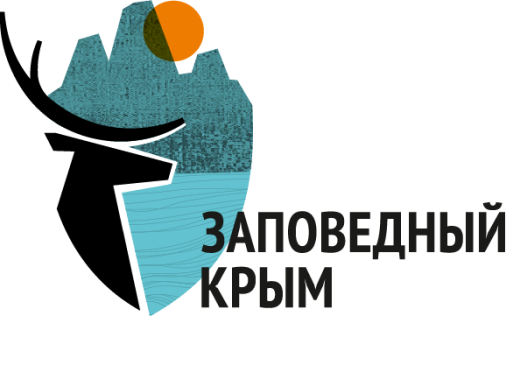

KARKINITSKY STATE NATURE REFUGE
KARKINITSKY STATE NATURE REFUGE
Karkinitsky State Nature Refuge is one of the most important wintering and nesting sites for wetland birds in the northern Black Sea region. It is on the migration route of birds flying from Europe to Asia and Africa.
We protect the water area of the refuge to preserve valuable wetlands and improve the habitat of waterfowl species.
We protect the water area of the refuge to preserve valuable wetlands and improve the habitat of waterfowl species.
The refuge is adjacent to the northern border of Lebyazhyi Islands Nature Reserve. The protected area is 277 square kilometers.
The refuge is adjacent to the northern border of Lebyazhyi Islands Nature Reserve. The protected area is 277 square kilometers.
Karkinitsky State Nature Refuge is one of the most important wintering and nesting sites for wetland birds in the northern Black Sea region. It is on the migration route of birds flying from Europe to Asia and Africa.
We protect the water area of the refuge to preserve valuable wetlands and improve the habitat of waterfowl species.
We protect the water area of the refuge to preserve valuable wetlands and improve the habitat of waterfowl species.

Flora
The vegetation cover on the silty-sandy soil is represented by communities of zostera marina and zostera noltii. At depths of more than four meters, the vegetation cover is represented mainly by red algae.
There are 25 macrophyte species in the refuge:
There are 25 macrophyte species in the refuge:
- 3 species of flowering plants,
- 7 species of green algae,
- 1 species of brown algae,
- 14 species of red algae.
Flora
The vegetation cover on the silty-sandy soil is represented by communities of zostera marina and zostera noltii. At depths of more than four meters, the vegetation cover is represented mainly by red algae.
There are 25 macrophyte species in the refuge:
There are 25 macrophyte species in the refuge:
- 3 species of flowering plants,
- 7 species of green algae,
- 1 species of brown algae,
- 14 species of red algae.
Fauna
The macrozoobenthos of the refuge is dominated by bivalves. Polychaetes take the second place. They are followed by crustaceans, gastropods and other animals whose species are not defined.
There are jellyfish (rootfish, aurelia) and ctenophora in macroplankton.
In the refuge, you can find many species of soltwater fish. There are about 46 species from 11 families there, and at least 6 species are included in the Red Data Books of the Russian Federation and Crimea.
There are no reptiles or amphibians here.
There are jellyfish (rootfish, aurelia) and ctenophora in macroplankton.
In the refuge, you can find many species of soltwater fish. There are about 46 species from 11 families there, and at least 6 species are included in the Red Data Books of the Russian Federation and Crimea.
There are no reptiles or amphibians here.
Fauna
The macrozoobenthos of the refuge is dominated by bivalves. Polychaetes take the second place. They are followed by crustaceans, gastropods and other animals whose species are not defined.
There are jellyfish (rootfish, aurelia) and ctenophora in macroplankton.
In the refuge, you can find many species of soltwater fish. There are about 46 species from 11 families there, and at least 6 species are included in the Red Data Books of the Russian Federation and Crimea.
There are no reptiles or amphibians here.
There are jellyfish (rootfish, aurelia) and ctenophora in macroplankton.
In the refuge, you can find many species of soltwater fish. There are about 46 species from 11 families there, and at least 6 species are included in the Red Data Books of the Russian Federation and Crimea.
There are no reptiles or amphibians here.
Fish
Shallow waters of the Karkinitsky Bay are a favourite feeding place for sturgeon: the Black Sea beluga, Acipenser colchicus and the Black Sea stellate surgeon. The Black Sea salmon can also be found here.
Other species of fish are also common. They are Alosa maeotica, Alosa caspia tanaica, Sprattus sprattus phalericus, Clupeonella cultriventris, Engraulis encrasicolus ponticus, Trachurus trachurus, Belone belone, Syngnathus typhle, some species of Gobiidae, Sarda sarda, Mugil cephalus, Chelon auratus, Chelon saliens, Liza haematocheilus, Scophthalmus maeoticus, Solea solea, Hippocampus, Symphodus tinca, etc.
Fish
Shallow waters of the Karkinitsky Bay are a favourite feeding place for sturgeon: the Black Sea beluga, Acipenser colchicus and the Black Sea stellate surgeon. The Black Sea salmon can also be found here.
Other species of fish are also common. They are Alosa maeotica, Alosa caspia tanaica, Sprattus sprattus phalericus, Clupeonella cultriventris, Engraulis encrasicolus ponticus, Trachurus trachurus, Belone belone, Syngnathus typhle, some species of Gobiidae, Sarda sarda, Mugil cephalus, Chelon auratus, Chelon saliens, Liza haematocheilus, Scophthalmus maeoticus, Solea solea, Hippocampus, Symphodus tinca, etc.
Other species of fish are also common. They are Alosa maeotica, Alosa caspia tanaica, Sprattus sprattus phalericus, Clupeonella cultriventris, Engraulis encrasicolus ponticus, Trachurus trachurus, Belone belone, Syngnathus typhle, some species of Gobiidae, Sarda sarda, Mugil cephalus, Chelon auratus, Chelon saliens, Liza haematocheilus, Scophthalmus maeoticus, Solea solea, Hippocampus, Symphodus tinca, etc.
Waterfowl birds
Waterfowl birds use the refuge as a safe resting place during migrations, molting, wintering, and summering.
- In the refuge, you can find loons, podiceps, pelicans, cormorants, swans, geese, more than 20 species of ducks, common coots, gulls, terns, skuas, petrels and red-necked phalaropes.
- In winter, when the shallow waters of the refuge freeze, a large number of waterfowl gather in water openings of the refuge. At this time, bird species that are not typical for open water areas appear on ice floes and hummocks. These are black vulture, white-tailed eagle, raven, and hooded crow.
Waterfowl birds
Waterfowl birds use the refuge as a safe resting place during migrations, molting, wintering, and summering.
- In the refuge, you can find loons, podiceps, pelicans, cormorants, swans, geese, more than 20 species of ducks, common coots, gulls, terns, skuas, petrels and red-necked phalaropes.
- In winter, when the shallow waters of the refuge freeze, a large number of waterfowl gather in water openings of the refuge. At this time, bird species that are not typical for open water areas appear on ice floes and hummocks. These are black vulture, white-tailed eagle, raven, and hooded crow.
Mammals
In the refuge there are three cetacean species from the Red Data Books: short-beaked common dolphin, bottlenose dolphin and the Black Sea porpoise.
Mammals
In the refuge there are three cetacean species from the Red Data Books: short-beaked common dolphin, bottlenose dolphin and the Black Sea porpoise.
Photos used on this site belong to (photo credits): S. Ledenkov, I. Sikorsky, L. Moroz, V. Kostrov, N. Litvinyuk, D. Rutyanov, S. Alyomov, M. Atamanenko, G. Prokopov, D. Voinov, Y. Timofeev, Y. Shumlyaeva, M. Rozanov, V. Anzylov, V. Zyuzin, A. Gromov, Y. Zhuravleva, E. Nekadimova, N. Krymsky, K. Polyanskaya, A. Rybintsev, A. Mishin, A. Dmitrieva and naturerussia.travel
Photos used on this site belong to (photo credits): S. Ledenkov, I. Sikorsky, L. Moroz, V. Kostrov, N. Litvinyuk, D. Rutyanov, S. Alyomov, M. Atamanenko, G. Prokopov, D. Voinov, Y. Timofeev, Y. Shumlyaeva, M. Rozanov, V. Anzylov, V. Zyuzin, A. Gromov, Y. Zhuravleva, E. Nekadimova, N. Krymsky, K. Polyanskaya, A. Rybintsev, A. Mishin, A. Dmitrieva and naturerussia.travel

Yalta Mountain-
Forest Nature Reserve
Forest Nature Reserve
Kazantyp
Nature Reserve
Nature Reserve
Opuksky
Nature Reserve
Nature Reserve
Islands
and Water Area
and Water Area
Contacts
298650, The Republic of Crimea, Yalta, Sovietskoe, Dolosskoe road, 2.
+7 365 423 30 50
+7 365 437 88 41
zapovedcrimea@mail.ru
+7 365 423 30 50
+7 365 437 88 41
zapovedcrimea@mail.ru
© Crimean Protected Areas
All rights reserved. Any copying from this site is prohibited without permission of the directorate.
All rights reserved. Any copying from this site is prohibited without permission of the directorate.
If you have an emergency, witnessed a fire, illegal dumping or other law violations, dial:
+7 365 423 30 50
+7 978 904 24 40 (hotline)
+7 978 901 56 70
(Deputy Ranger Service Director)
+7 365 423 30 50
+7 978 904 24 40 (hotline)
+7 978 901 56 70
(Deputy Ranger Service Director)







